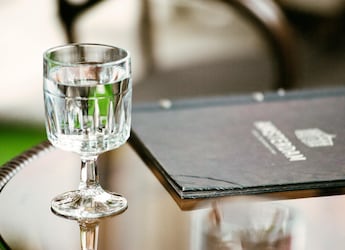The French aren't renowned for their love of royalty, so when something as humble as the potato is feted with an honorific link to an heir apparent - known, back when they still had such things, as the dauphin - you know the results are probably going to be pretty special.In fact, the dauphin, obviously a potato-loving fellow, had two tuber dishes named after him: one, the deep-fried potato profiteroles that so flummoxed contestants on the last series of MasterChef, the Professionals; the other, and better-known in this country at least, a rich gratin of sliced potatoes and cream, gilded with a hint of garlic.It's the latter, an unabashedly decadent dish that makes an excellent partner to spring lamb in this decidedly wintery weather, that I'm focusing on today. I've found it more difficult than it looks: previous attempts have been variously plagued by undercooked and soggy potatoes, dryness and gruesomely curdled cream. So how do you make a gratin dauphinois fit for a ... president?
The potatoes
There's an interesting divergence in opinion here. Nigel Slater writes that "potatoes are generally the yellow, waxy sort so the slices keep their shape, though some of us prefer the collapsing floury varieties", but, apart from Richard Olney, writing in the masterful French Menu Cookbook, everyone from Michel Roux Jr to Stevie Parle go for the distinctly fluffy likes of Maris Piper.Advertisement
The sauce
That some kind of cream is involved is, I'm afraid, almost sadly inevitable - although some older recipes, including Escoffier's, use eggs instead. I find Olney's sauce, made from milk and eggs, separates during cooking, into a firm, eggy (and very tasty) element, and some rather less appetising creamy-coloured liquid.Roux Jr, who gives a beautifully simple recipe in his book A Life in the Kitchen, uses straight double cream, at room temperature - toss the potatoes in it, and you're ready to bake. It's wonderfully rich and sticky, but perhaps a little heavy unless you're planning on serving it in Michelin-starred miniature portions. The milk-and-cream mixture favoured by Nairn, Blanc, Parle and Bristolian chef Josh Eggleton yields more of a homely result.Advertisement
The cooking
Roux's simple approach is unusual: most of the other recipes I try either heat the milk and cream before adding them to the dish, as in Eggleton and Parle's dishes, or like Nairn, par-boil the potatoes in the dairy. He cooks them until "almost tender", and, together with the floury variety he uses, this makes the finished dish slightly mushy - but the firm potatoes I'm using could do with a bit of pre-cooking, so I'm going to boil them more briefly.Cooking the potatoes in the sauce also has the benefit of thickening it, as their starch leaches out into the liquid. Starch is another vexed question when it comes to dauphinois - Nairn, Roux Jr and Blanc are firmly of the opinion that the slices should not be rinsed before use, so they retain as much of the starch content as possible, while Eggleton soaks his in water before use, and David writes that rinsing them in water thoroughly is "most important". I'm all for a thicker sauce, however, particularly as my waxy potatoes are naturally lower in starch than flourier varieties and will need all the help they can get.Eggleton bakes his dish, then presses it in the fridge overnight before reheating. This is a clever way of achieving the solid little slabs of dauphinois favoured by fancy restaurants, but unnecessary if you're just going to plonk the gratin dish on the table for everyone to fight over.Advertisement
The flavouring
This is another one of those French dishes where it's easy to get one's culottes in a twist over issues of authenticity - Slater writes that "restraint with the garlic will be rewarded. The dish needs just a faint whiff of the bulb, and wiping the base and sides before adding the potatoes produces something more authentic than adding it crushed or sliced." Authenticity be damned - I can hardly taste the stuff in Roux Jr and Olney's dishes, which have a pleasant, creamy blandness. Adding it, crushed, to the dairy, as Nairn does, seems a much better option for my crude Anglo-Saxon palate.Nutmeg, as used by Eggleton, Roux Jr and Olney, is a classic seasoning for creamy dishes, and thus works brilliantly here. Anthony Bourdain infuses the cream with herbs in his Les Halles cookbook, and indeed, Parle uses thyme in his gratin - I'm not keen on adding too many flavours to such a simple dish, but I do love the idea of the anchovies he also uses, which melt into the sauce to give the finished dauphinois a gorgeous savoury richness. A stroke of genius as far as I'm concerned, and particularly brilliant with lamb - fear of the French prevents me adding them to the perfect version, but I urge you to give the idea a try if you're not anchovy-averse.According to Larousse Gastronomique, cheese is permissible, however: "Grated gruyère may be added: one layer on the bottom of the dish and another on the top." Olney stirs his into the sauce, but I'm going to stick to a modest layer on top, in true gratin fashion. Two seems de trop: after all, I've got my arteries to think of.Gratin dauphinois
Serves 6750g waxy potatoes
250ml double cream
100ml whole milk
2 small cloves of garlic, crushed
Nutmeg, to grate
Butter, to grease
50g gruyère, grated
Advertisement
Felicity Cloake's perfect gratin dauphinois. Photograph: Felicity Cloake for the Guardian
For the latest food news, health tips and recipes, like us on Facebook or follow us on Twitter and YouTube.
Advertisement
